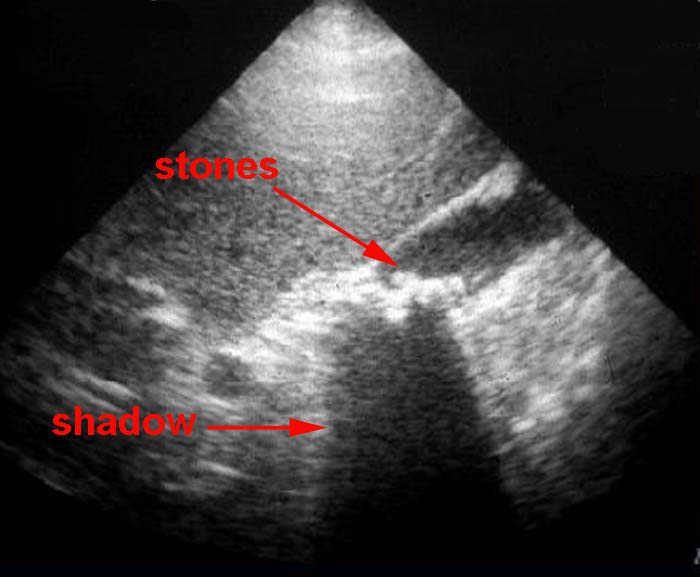GI Radiology >
Biliary >
Gallbladder >
Inflammatory >
Cholelithiasis
Inflammatory
Diseases of Gallbladder

Cholelithiasis
|
- Pathogenesis:
- May occur when cholesterol levels are high. Normally, bile salts and lecithin are sufficient to keep the cholesterol soluble.
- Approximately 80% of stones are lucent cholesterol and 20% contain enough calcium to be detected on radiograph.
- Gallstones are more common in women and in patients with pancreatitis, cirrhosis, diabetes, Crohn's disease, hyperparathyroidism, and hemolytic anemia.
- Stones are freely moveable and may float in the gallbladder depending on their density.
- Radiographic findings:
- U/S: all gallstones will show a bright intraluminal echo and cast a posterior shadow when imaged under the appropriate conditions and with the correct transducer settings.

- Small stones (< 5mm) will likely have to be imaged with a high frequency transducer to observe shadowing.
- In approximately 20% of cases, the gallbladder will be completely filled with stones. In such a case, the gallbladder will demonstrate a bright echo with posterior shadowing.
|
|
![]()
![]()